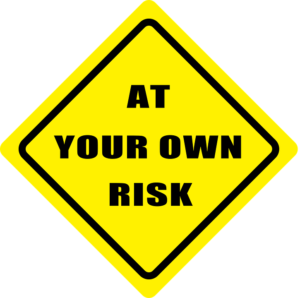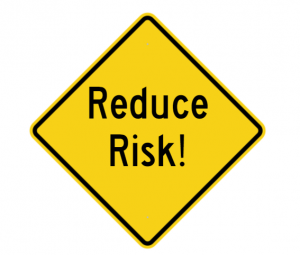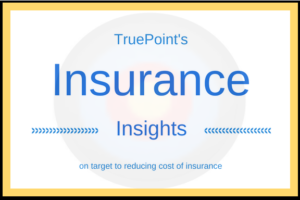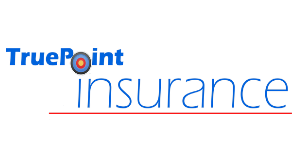What is insurance?
Practice Risk Avoidance at your own risk
Individuals and business also practice a direct from risk avoidance.  Suppose you sold your car and committed to using public transportation.  Without a car, you have successfully eliminated your primary automobile liability exposure.  And without the risk, you are no longer required to carry the state-mandated insurance.
Businesses might opt to outsource specific functions allowing them to eliminate multiple risks ranging from property to casualty to workers  compensation.  Altering production methods, implementing automation, and revising policies and procedures are just a few avenues where businesses can eliminate specific risk.
compensation.  Altering production methods, implementing automation, and revising policies and procedures are just a few avenues where businesses can eliminate specific risk.
Risk avoidance is not a practical solution for all exposures, but it can be a very cost-effective solution when implemented correctly.¬† Those practicing this method must realize that risk avoidance may not be as simple as it appears.¬† You may have noticed in the auto liability example above, the phrase “primary exposure.” ¬†This suggests that there continues to be potential exposure even after the sale of the vehicle.
You don’t have to own a vehicle to drive.¬† People rent cars all the time.¬† While it is hard to imagine a scenario where you could rent a vehicle without liability insurance if you did you would be exposed.¬† A more likely scenario would be your exposure in the event you borrowed a friend‚Äôs car. Coverage stays with the auto, so as long as you had permission from your friend to drive their vehicle, the policy covering the car would protect you.
Borrower Beware!¬† What auto liability limits does your friend have?¬† Did you ask?¬† Does it matter?¬† Let’s assume that the vehicle has the minimum coverages allowed by your state.¬† For us, that would be $25,000 for bodily injury for any one person, capped at $50,000 if multiple individuals are injured and $25,000 for property damage.
As the driver of the vehicle, you are potentially liable for damages that exceed the vehicles policy limits.¬† In this scenario, the vehicle coverages are limited, placing you in a position with significant exposure.¬† In your past, this wasn’t an issue.¬† When you owned an auto and had insurance, your policy extended liability protection to you even when it wasn’t your car.¬† Your decision to practice risk avoidance has triggered additional and perhaps unforeseen exposures.
There is an old saying, “You’re picking up pennies in front of a train,” or more simply said, you’re taking too much risk for only a modest reward.¬† If you practice risk avoidance, you better know the train schedule.
Risk Reduction; Modifying exposures for everyone’s benefit
 What is risk reduction role in risk management?   Unlike the other three methods, risk reduction is not a stand-alone method.  It is more akin to a complimenting strategy or modification.  Examples of risk reduction would be businesses utilizing sprinklers, keeping parking lots and sidewalk free from ice and snow, or preemptively addressing employee actions that put an organization at risk.  Individuals performing regular maintenance on their home or auto are practicing risk reduction.  Installing a security system or erecting a fence with a locked entry gate around a pool are also examples of individuals utilizing risk reduction techniques.
What is risk reduction role in risk management?   Unlike the other three methods, risk reduction is not a stand-alone method.  It is more akin to a complimenting strategy or modification.  Examples of risk reduction would be businesses utilizing sprinklers, keeping parking lots and sidewalk free from ice and snow, or preemptively addressing employee actions that put an organization at risk.  Individuals performing regular maintenance on their home or auto are practicing risk reduction.  Installing a security system or erecting a fence with a locked entry gate around a pool are also examples of individuals utilizing risk reduction techniques.
When combing risk reduction methods with risk retention, the results directly benefit the individual or business.  These actions may have one of two outcomes.   The installation of a sprinkler system is an action that results in lessening the loss.  Steps taken to reduce risk can also lower the probability of loss.  The previously mention action to address snow and ice removal would most likely reduce the potential for a loss.
Don’t Fear the Loss Control Man!
The role of Loss Control can be confusing.¬† Insurance companies can be viewed as risk management consultants and as risk transfer solutions. However, a fine line exists between providing beneficial risk management counseling and becoming a deterrent to business.¬† The action of an insurance companies loss control efforts can easily gauge the company’s success in balancing the two roles.¬† When this group with providing risk reductions techniques for the insured they become a catalyst for change that becomes genuinely value added for both the insured and the insurer. Loss Control units aimed at creating awareness of potential risk reduction opportunities will have a positive financial impact on the insurance company, which should, in turn, have a positive effect on the insured’s cost of risk management.
When you buy an insurance policy, you are purchasing much more than a risk transfer agreement.  The insurance policy today has evolved to incorporate many aspects of risk sharing, risk retention and indirectly risk avoidance.  The final method of risk management, risk reduction also comes into play.  Acting primarily as an incentive, or a chance to reduce the overall cost insurance.
 So what is insurance?  Today, insurance is a contract/relationship between an insured and an insurer where the insurer utilizes modern risk management tools and encourages proactive steps by the insured which will lead to an increasingly efficient process of indemnifying the insured against specified peril(s). 
Access Part 1 of this series 

 Contact
Contact
 Email an Agent
Email an Agent

 Click to Call
Click to Call Get Directions
Get Directions





